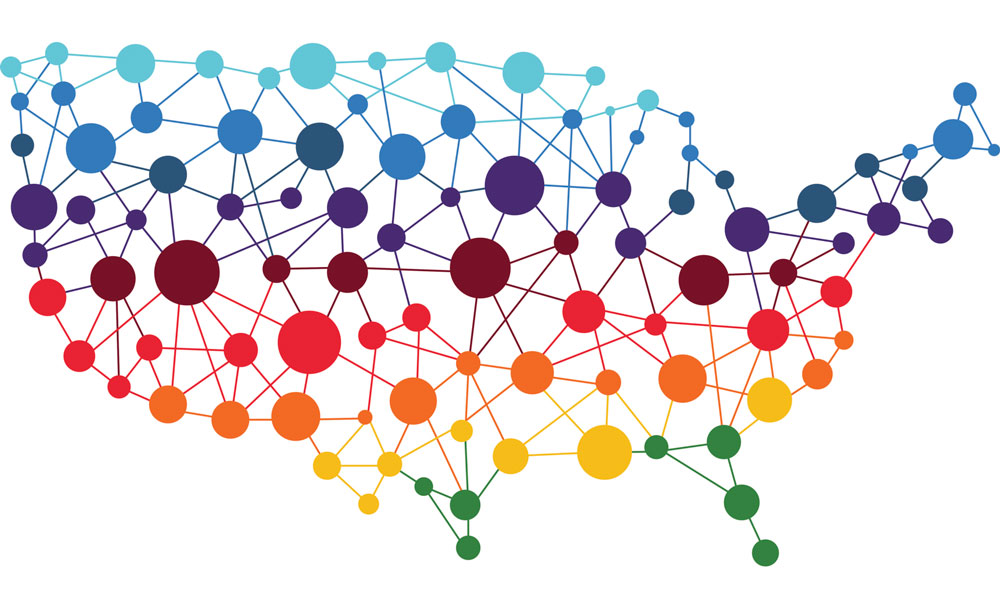
Leading a Staff That Works Everywhere
An office with plenty of remote workers can work together well thanks to technology. But leading the team, as one association executive has learned, demands plenty of emotional intelligence as well.
Where is the Arctic Research Consortium of the United States located? According to ARCUS’ website, its headquarters is in Fairbanks, Alaska. But less than half of its 15-person staff works there, and its executive director, Dr. Robert Rich, CAE, is based in Washington, DC. Others are located at other remote points elsewhere in Alaska, as well as in California, Massachusetts, and New Hampshire.
Rich, who took the reins at ARCUS last May after a long tenure at the American Chemical Society, says the staff has handled that structure well. He’s an advocate of the concept of the Results-Only Work Environment—if the IT person does his best work at 3 a.m. and 500 miles away, so be it. “I’m very supportive of people doing work when it fits their time—we have people who go cross-country skiing in the morning before coming into the office,” he says. “So long as there are clear expectations, I don’t care when or where you’re working.”
The thing about an unstructured environment, though, is that it requires a lot of thought about how best to structure it. Here are a few lessons that Rich has learned from his experience.
The kind of people who work out in this kind of environment are people who are excited about the organization.
- Good technology helps a lot. A lifeline for the ARCUS staff is the Zoom videoconferencing software they use for monthly all-hands meetings, and for more frequent check-ins with managers. A Basecamp-style project management tool helps the staff coordinate work, and Google Drive helps them share and edit documents. An email- and IM-only environment would be impossible for geographically distributed work, Rich says, and letting everybody see each other every once in a while is valuable. “So much communication is through facial expression and tone of voice,” he says.
- But good technology can’t help with everything. ARCUS doesn’t have much of a travel budget, but when possible Rich tries to get everybody on staff in the same room. “I typically travel to Alaska four or five times a year, and while I’m there I make an opportunity to talk to people in the different places I go to, so that as much as possible we get that time face-to-face in person.” That face time isn’t always work related: “We’ve done group bowling outings, game nights,” he says. “I know these things are valuable for team-building even if you’re all in one location, but in an organization like ours, to be able to just hang out is of tremendous value.”
- Remote workers require a particular kind of temperament. One upside to the distributed office, Rich says, is that you can hire the best-qualified person without concern for where that person lives (or for relocation costs). But that doesn’t mean the best-qualified person is going to be comfortable working without coworkers. “You really need people who are able to be self-motivated and are able to manage their own work when it comes to setting their own priorities, setting their own work schedules,” Rich says. “The kind of people who do work out in this kind of environment are people are just excited about the organization, excited about their work, and have the skill set to be able to make progress in the absence of a lot of guidance from management. If they don’t have that, they’re not going to do well.”
- People who lead remote workers need to adjust their leadership styles. A CEO leading remote workers needs to check in often with staff members, perhaps even more than in an office where the employee is just down the hall. “One of the big things I’ve had to change is to think more about where people are at, and to make sure I find out,” Rich says. “Where are they in terms of how much of a workload they feel they have? How do they feel about their deadlines? How do they feel about the projects they’re working on? I think a big part of the role of the executive director is always to help people see the big-picture strategic vision. Where are they at with understanding the vision?”
- Outsiders may need convincing that it works. A distributed office may mean that members and stakeholders who believe the association has a specific home will need reassurance that the system functions well. “Every time I meet somebody new and we start talking about where we’re located, I have to explain it, and make sure people understand that it doesn’t really matter where we are, that we can serve their needs,” Rich says.
What leadership and technology tools do you use to manage remote workers? Share your experiences in the comments.
(iStock/Thinkstock)






Comments